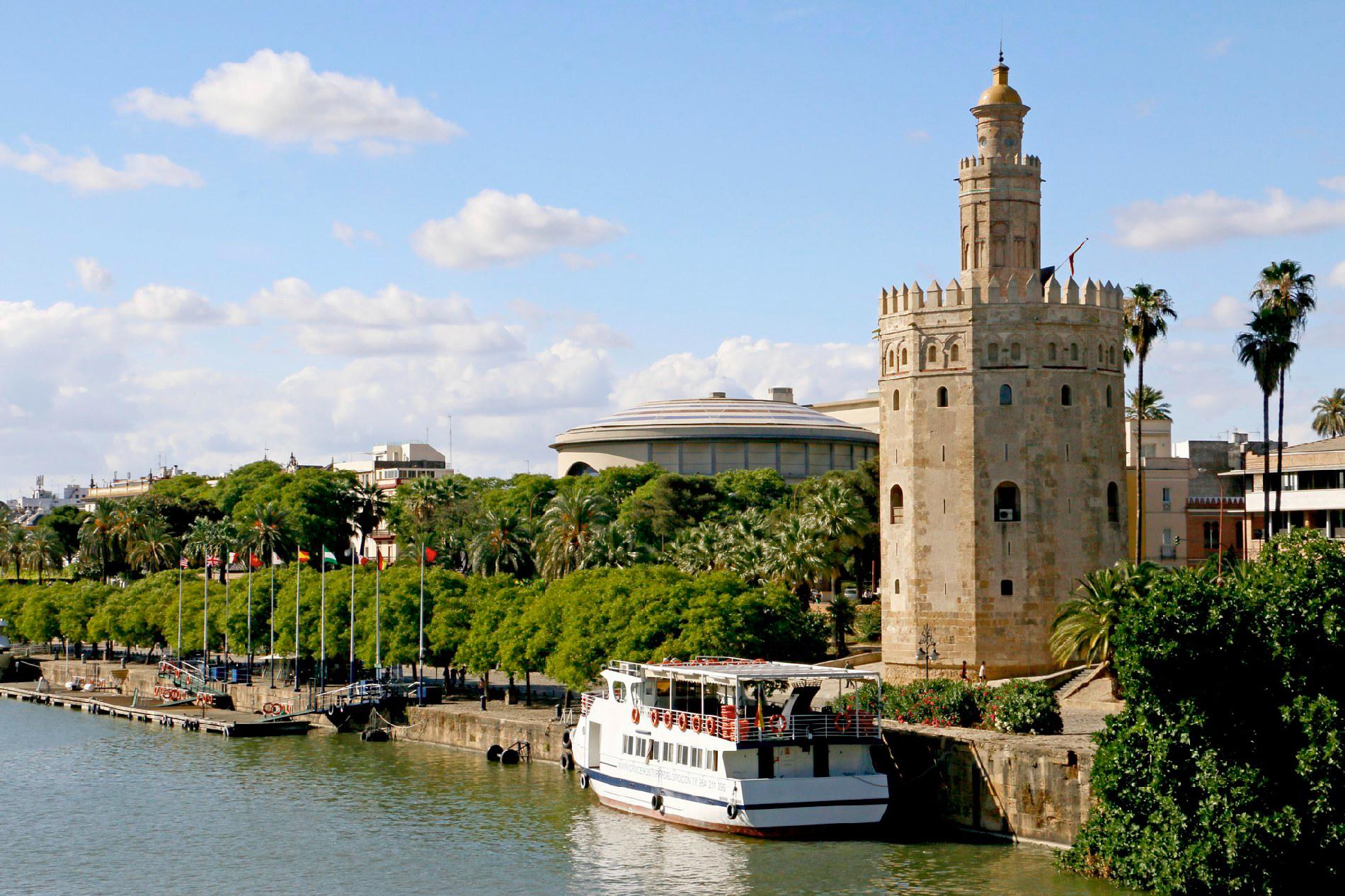On the left bank of the Guadalquivir, next to the Maestranza bullring, stands the Torre del Oro giving its golden reflections to the river since the 13th century. Originally a defensive watchtower that the Almohad governor of Seville Abù l-Ulà ordered to be built in 1220, it was one of the last constructions erected in the Muslim Isbiliya. In 1248, the troops of King Ferdinand III of Castile would take the city for the Christians. A thousand curious stories, legends and hoaxes have circulated about this elegant dodecagonal tower: the first, that of its own construction, which spans five centuries and reflects three different eras in the history of Sevilla.
We know that the Tower of Gold has been known this way since Arab times for its characteristic golden gleams – possibly its name then was Bury al-dahab – but we have not known for sure why until very recently. It was in 2005, during restoration works, that scientists discovered that the glosses are due to a mixture of lime mortar and pressed straw. Thus ended centuries of myths that attributed the name to a supposed tile roof that reflected the sun’s rays or to gold and silver treasures that King Pedro I kept in the tower.
Another of the false legends about the tower states that from its basement crossed the river to the other bank a thick chain destined to cut off the path of enemy ships. The truth of the case is that in Almohad times there was an aquatic walkway, formed by several ships linked by a chain, thus connecting the city with Triana. It was that chain that in 1248 destroyed the Castilian fleet of Admiral Ramón de Bonifaz, who ascended the Guadalquivir in the middle of the siege of the city. Because there are many of those Asturian and Cantabrian sailors, the feat has been immortalized in the coat of arms of Cantabria and in those of towns such as Avilés, Santander or Castro Urdiales.
How could it be otherwise, such a picturesque building could not have had a single use throughout history. After the Christian conquest of Seville, the tower lost its defensive function to be used as a chapel dedicated to San Isidoro de Sevilla, former archbishop of the city. In subsequent centuries, the old watchtower has also served as a prison for members of the nobility, a gunpowder store, and offices for the Harbor Master and Naval Command. Legend also says that King Pedro I took the maidens he courted to the Torre del Oro. The best known in Seville is Doña Aldonza, who is said to have lived in the tower.
The watchtower was declared a historical-artistic monument in 1931 and has been restored several times during the 20th century, partly thanks to the work of the Navy. Since 1944 it houses the Maritime Museum, for which 400 pieces were brought from the Naval Museum of Madrid. On its two floors, the center brings together various nautical instruments, models of historic ships, navigation charts and documents that review the history of the Spanish Navy, as well as Magellan’s world tour. The copy of Johannes Janssonius’s engraving of Seville from 1617 is very curious, in which you can see the walled city and the Torre del Oro before its last addition in the 18th century. Its panoramic terrace with magnificent views of Seville and the mythical reflections of the tower in the Guadalquivir river


Leave A Comment